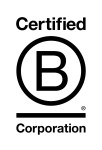If you have explored socially responsible investing (SRI), then you might also be familiar with the concept of investment screening.
Socially responsible investing, a form of impact investing, is a strategy used to align investments with social goals.
Investors understand that their money can produce positive outcomes in more than just a financial sense by achieving both financial growth and positive social change. Investment screening is used to filter out companies or organizations that do not meet investors’ standards, and instead allocate capital to those that do.
Positive and negative investment screening is used to distinguish between different organizations based on how restrictive investors would like their investments to be. Positive screening identifies and focuses investments into companies that are considered top performers based upon chosen criteria. Alternatively, negative screening looks to exclude companies that perform poorly on environmental, social, and corporate governance (ESG) criteria and removes them from investment portfolios. Understanding some of the different approaches to socially responsible investments can help you to learn how your portfolio is managed, and which investment strategies best fit your objectives.
Table of Contents
- 1 What is Impact Investing?
- 2 What is Socially Responsible Investing?
- 3 The Difference Between SRI and Impact Investing
- 4 Screening and Socially Responsible Investing
- 5 What is Negative Screening?
- 6 What is Positive Screening?
- 7 How Does a Fund Manager Screen Investments?
- 8 Is One Form of Screening Better Than the Other?
- 9 Final Thoughts
What is Impact Investing?
Impact investing is a way to invest your money with the intent to bring about some socially desirable outcome with the expectation of a financial return.
CNote specifically defines impact investing as deploying capital with the aim of creating some measurable positive social outcomes with the expectation of financial returns. Like your vote, your dollar is powerful. Whenever you give money to an institution, whether in the form of an investment or a transaction, you are supporting their mission – whether you morally agree with it or not. It’s that simple.
Of course, there is some subjectivity when it comes to what it means to do good. Something that one investor believes to be a good cause may not be important to another investor. Overall, the goals of impact investing generally reflect popular social and political opinions of the time. In the mid-twentieth century, this included a focus on civil rights, women’s suffrage, and anti-war efforts. Nowadays, common causes people look to support through the power of their investments are environmentally sustainable initiatives, increasing economic opportunity for minority or underrepresented communities and ending world hunger.
There are three key components to impact investing: investment with the intention to do good and the expectation of financial return all while creating measurable impact. Measuring the impact of one’s investment is a central tenet of impact investing. If you are investing to make a difference, you should utilize measures to understand the true impact your investment is having.
What is Socially Responsible Investing?
Socially responsible investing (SRI) is a strategy that considers specific investor values when choosing organizations to invest in. Sometimes referred to as Sustainable, Responsible, Impact Investing, SRI Investing involves investing in companies that are engaged in ethical and socially conscious fields. Also known as ‘green investing’ or ‘ethical investing,’ SRI has become a popular way for investors to support causes they believe in while earning positive financial returns.
Much like impact investing, there is a level of subjectivity when it comes to socially responsible investments. In general, SRI indexes or mutual funds look to invest in organizations that support environmental and social causes. They typically avoid companies that deal with alcohol, gambling, tobacco, and weapons.
Why Engage in Socially Responsible Investing Practices?
People invest in SRI indexes and funds for a variety of reasons. An investor may be driven by strong personal values that guide their investment decisions. If investors are dedicated to green living, they may want to invest in companies that pass ESG criteria for green companies. A company or investor may pride themselves in supporting organizations that celebrate diversity. They may pursue investments in companies that champion these initiatives as a way of improving their own ESG profile.
We are seeing more often than ever before that clients and shareholders are demanding that companies take action to improve their own ESG standing, like through investing in SRI opportunities. Shareholder activism has forced organizations to reevaluate their own practices and invest in causes that their shareholders value.
Does SRI Result In Lower Financial Returns?
You may have heard that committing to socially responsible investing may result in lower returns. However, that is often not the case.
Consider the Domini 400 Social Index, which is essentially the S&P 500 for socially responsible investing. In a study from Morningstar and MSCI that compared the index total returns from the year 1990 to 2008, it was determined that the return and risk characteristics were nearly identical for both indices. In fact, the Domini 400 Social Index slightly outperformed the S&P 500.
As the tide changes towards more socially responsible investing, companies are learning that raising their ESG standards can earn them more investors and a stronger client base. Consumers are looking for companies that reflect their values now more than ever. Socially responsible investing has built a bridge between enacting positive change and growing wealth.
The Difference Between SRI and Impact Investing
While SRI and impact investing both seek to enact social change and produce wealth, they differ in their need for measurable change. SRI is concerned with deploying investment dollars in a way that is responsible and positive. Impact investing requires that the change be, as the name implies, impactful. A good way to understand the difference between SRI and impact investing is that SRI can simply stop at “do no harm” while impact investing seeks to proactively “do good” with investments.
SRI is concerned with deploying investment dollars in a way that is responsible and positive. Impact investing requires that the change be, as the name implies, impactful. A good way to understand the difference between SRI and impact investing is that SRI can simply stop at “do no harm” while impact investing seeks to proactively “do good” with investments.
Screening and Socially Responsible Investing
While impact investors seek to do measurable good, socially responsible investors seek to support causes that align with their views and avoid causes that they find undesirable. This is done through a process called screening.
Investment screening is the process of determining whether an organization’s values align with that of the investors. In today’s market, screens help identify firms based on environmental, social and corporate governance (ESG) criteria.
When evaluating companies based on environmental factors, a screen may take into account the amount of waste they produce, greenhouse gas and carbon outputs, raw materials used in production and how materials are sourced.
Companies evaluated based on social standards will typically look at the health and safety of workers, gender equality within the company, and diversity within the workplace. However, sometimes the assessment of socially responsible practices does not stop at the company themselves; Some fund managers will even evaluate the workplace practices of suppliers to ensure that they pass the screens as well.
Governance standards refer to how the business conducts itself. These screens will typically test for corruption, instances of retaliation, scandals, or even the compensation differences between executive members and entry-level workers.
There are two forms of investment screening: positive screening and negative screening. Screens are essentially filters that define what is an acceptable investment. They help to identify companies that may have risks that are not recognized by traditional fiscal standards. For example, if an analyst would like to screen for companies that are cruelty-free, this would set a clear screen parameter for investment opportunities.
The History of Screening
Investment screening was originally used by religious investors who were concerned about investing in industries that they found sinful. This was meant to exclude companies that were involved in industries like weapons manufacturing, alcohol and tobacco companies, and gambling operations.
Eventually, this shifted from just being utilized by religious investors to also being used investors who were interested in using their money to advance their social beliefs. This especially included women’s right to vote and civil rights in the early 20th century.
Investors also used screening to divert funds from companies that they found did not represent their values. In the 70’s and 80’s, investors used divestment as a way to negatively screen companies that benefitted from South Africa’s Apartheid policy. If a company benefitted from apartheid, investors pulled all of their investments out of the company. The lack of economic support helped to aid in the breakdown of apartheid.
What is Negative Screening?
Negative screening, or exclusionary screening, is one of the most basic methods of separating socially responsible investments from those that are likely to have a negative effect on society.
Negative screening is much less restrictive than positive screening. It simply excludes investments in companies that actively work against the investor’s values, such as organizations with a history of international bribery or corruption. Effectively, this process works to remove investments in entities that are deemed as having a negative impact on society or the environment from the investor’s portfolio. For this reason, negative screens help to embody the “do no harm” initiative of impact investing.
Early socially responsible investors used negative screens to weed out companies in ‘sin industries’, such as alcohol or gambling. The negative screening process has evolved to also exclude companies that do not meet diversity standards, emit large amounts of greenhouse gases, or engage in corrupt business practices.
Advantages
Negative screening is the most widely used process of identifying targeted investments for a reason; it’s incredibly inclusive.
Investors hesitant to adopt SRI may consider negative screening as it does not require companies to go above and beyond to be included in an investment portfolio. It weeds out the worst of the worst based on the particular screening criteria used and determines the rest of the companies to be acceptable. This can be beneficial to investors who are worried that SRI may be too exclusive.
Negative screens can also prevent investments into specific countries. Many exclusionary funds will exclude government bonds from countries that are known as human rights abusers. This not only prevents you from supporting practices that you find unacceptable, but it can also prevent you from investing in governments that are particularly egregious.
Drawbacks
One of the largest criticisms of negative screening is that it doesn’t work to support investments that align with an investor’s values. Negative screens work solely on eliminating investments that go against investor values. They do not place companies that support investor values at any particular advantage. By simply avoiding companies who actively work against investor values, negative screens do little to elevate the companies that actively do good. It is widely thought to have no tangible impact, as another investor (that is not focused on SRI) will likely invest in those stocks.
Examples
The most basic form of a negative screen is to avoid investments in ‘sin’ industries. This is also one of the earliest forms of negative screening. In the 1700’s, religious investors in the U.S. refused to place investments in tobacco, alcohol or gambling ventures. Even today, there are funds that screen based on specific religious doctrines.
Another example of a negative screen would be to screen for companies that have had any sexual harassment allegations in the past six years. Assuming that the fund is regularly rebalanced, any company that has not had a sexual harassment allegation in the past six years would be included or remain in the fund. A company that has had a sexual harassment allegation would be eliminated from the fund entirely.
What is Positive Screening?
Sometimes a fund manager may find that negative screening tactics may leave quite a few investments to choose from. This is where positive screening can be helpful.
Positive screening, or as it is sometimes referred to, ‘best-in-class screening’, is a process that identifies companies that are actively making contributions to social or environmental change. This enables investors to screen for and support practices that they find impactful.
Positive screening techniques work to identify and highlight organizations that are actively functioning to further environmentally sustainable and positive social practices, rather than simply avoiding bad behavior. Companies shown to have a positive impact are supported, while those who simply meet the status quo may fail the screen.
Advantages
Positive screening often looks to include only the best companies in a given impact category in the fund or portfolio.
Best-in-class screening also encourages companies to compete with each other for investment dollars. When investment funds are based on the environmental, social or governance performance of companies, this incentivizes companies to compete with one another to create more impactful change. Positive screening not only rewards companies that do well, but it encourages industry peers to further advance their positively impactful corporate practices as well.
Drawbacks
The one major downside of positive screening is that it can be too exclusive. Investors interested in diversifying their portfolio may have trouble doing so through a positive screen. Depending on how rigorous their screening process is, it can sometimes lead to just a few companies making the cut. However, if the screen is too lenient, it can allow for companies that aren’t necessarily committed to the given cause squeaking through. This can make the positive screen feel like a moot point altogether.
Examples
Many investors are indicating that it is not enough to simply avoid harmful investments. They are interested in investing in companies that actively support their values. A common positive investment screen is for companies that create a certain amount of clean revenue. For a screen that required at least 75% clean revenue production, then only companies that met that hurdle would make the cut.
How Does a Fund Manager Screen Investments?
Because screening is subjective to the investor’s values, finding a fund or portfolio that closely matches your values is essential. But how does a fund manager actually screen its investments?
The screening process is usually implemented in one of two ways: a third-party investment manager or the use of standard restriction screens from a third-party data vendor. In essence, a firm will either outsource the screening process or they will do it themselves based on third-party data.
A firm will audit funds or portfolios at specific intervals, often quarterly or annually. Investments that do not meet the screening criteria at the time of the audit are removed from the fund or portfolio altogether.
Investors must be careful to review the screening criteria closely. A fund may say that they use environmental, social or corporate governance screens, but they may not be as rigorous as an investor would like. Understanding which causes are important to the investor and how restrictive the investments should be is important when considering a firm’s screening methods.
Is One Form of Screening Better Than the Other?
There is no one form of screening that is inherently better than the other. Because positive and negative screening works in two different ways, it is widely agreed that a combination of both methods will lend itself to the most well-rounded screening process.
It is important that the investor has a clear idea of their SRI goals and personal delineations for success to be sure that the chosen investments align well with those ideals.
When Screens Get It Wrong
Just because a company passes a screen doesn’t mean they are perfect.
Screens are merely tools that are used to help a fund manager or research department quantify what it means to be a socially responsible investment. This does not always mean that the screens are particularly rigorous, or that the company being screened is entirely ethical. A company could pass on one screen but fail another.
For example, consider a fund manager that is tasked with identifying companies that are considered low waste by environmental criteria. A company may meet the low waste requirement but also be in the midst of a sexual harassment scandal. This company would pass the positive screen. If the fund manager also had a negative screen to exclude companies based on sexual harassment claims, this company would fail. It all depends on what the investment opportunities are being screened for.
Final Thoughts
Socially responsible investing attracts investors that are not only interested in turning a profit; They are also looking to support their community, the environment, and causes that they are passionate about to thrive. Investment screens help analysts identify which companies will gain investor’s support. They offer a standard by which investors can judge companies and hold companies accountable for their values and actions. Understanding screens can help you identify investments and help you feel confident that you are supporting a good cause.









